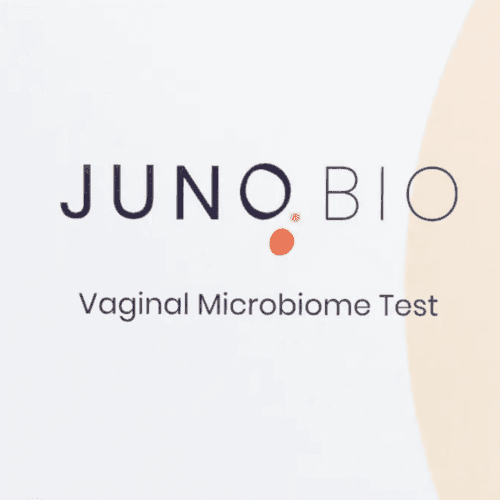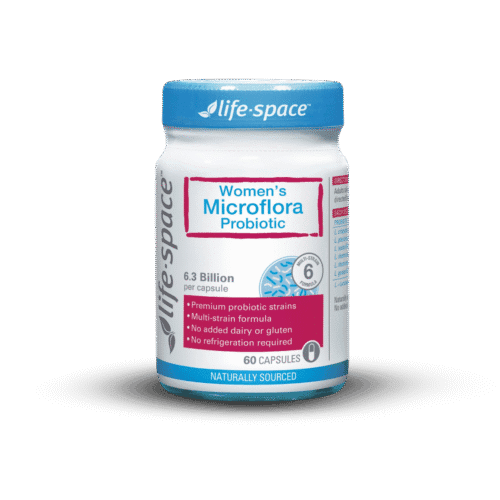Having a normal bowel movement, keeping dry underwear, and even standing up properly can be challenging after a vaginal birth. Here, we take you through some tips to support your body in healing while minimising tenderness.
Post-partum vaginal symptoms
- Swelling and tenderness
- High volume of discharge, which may be bloody and mucousy (lochia)
- Pain with urination and bowel movements
- Uncontrollable gas
- Heavy-feeling, swollen labia
How to get help for post-partum vaginal symptoms
There are many normal after-effects of giving birth vaginally, but many may come as a surprise to you. Speak with your midwife or OB-GYN about how you’re feeling, and ask for their advice and guidance. They are the experts, and they have loads of experience at their fingertips.
Vaginal recovery after birth: helping your body heal
Giving birth is extraordinary work. Whether you tore, had stitches, or simply feel battered, your vagina and pelvic floor have gone through major mechanical, hormonal, and microbial changes. The first weeks after birth are for repair — not for “bouncing back”.
Rest and gentle movement
Lie flat twice a day for about 30 minutes to ease pressure on the perineum and pelvic floor. This promotes drainage and reduces swelling.1,2
When you’re ready, begin gentle walking to support circulation, gradually increasing the time and pace. Avoid lifting anything heavier than your baby for the first six weeks, and hold off on high-impact exercise for about 12 weeks.
Cooling and light compression
- Swelling after a vaginal birth is common. Brief cooling intervals during the first 24 hours can bring relief — for instance, wrap a soft cloth around a cold pack and rest it against the perineum for a short time, leaving plenty of time between applications.
- After the first day, warmth tends to soothe better: short tepid baths or sitz soaks promote comfort and blood flow.
- Supportive cotton underwear or a light postpartum garment can ease soreness without restricting circulation.
Perineal care
Keep the area clean, but avoid over-washing. Rinse with warm water using a peri-bottle after urinating, then pat dry gently or air-dry. Skip soaps, wipes, sprays, and douches — these upset the vaginal barrier and microbiome.
A shallow warm sitz bath once or twice daily can help with itching or minor stitches.
Postpartum bleeding and discharge
Vaginal discharge after birth (lochia) lasts four to six weeks as the uterus clears out. It begins bright red, then turns brown, yellow, and finally pale.
See your doctor if bleeding becomes heavy (soaking a pad in an hour), if clots are large, or if there’s fever or a strong odour — all can indicate infection or retained tissue.
Use pads only until your review appointment; avoid tampons or cups until your doctor says the cervix is fully closed.
Bowels and bladder
Hormones, pain medicines, and swelling can make urination or bowel movements tricky. Constipation is especially common.
To keep things moving:
• Drink 1.5–2 litres of water daily, maybe more if you’re breastfeeding
• Eat plenty of fibre — fruit, vegetables, legumes, whole grains
• Keep breathing soft; don’t strain or hold your breath
• Raise your feet slightly so your hips sit lower than your knees, and let the belly relax
• Support stitches gently with your hand if needed
If you’ve gone three days without a bowel movement or it’s painful, ask about a stool softener such as lactulose or docusate.
A small amount of urinary leakage is normal at first; it usually resolves as tissues recover. If it continues, book a pelvic physiotherapy session.
Retraining the pelvic floor
Your pelvic floor forms a sling that supports the bladder, uterus, and rectum. Pregnancy hormones and the stretch of birth can leave it weak, so reconnecting with those muscles early is key.3,4
How to begin
Gently close and lift the muscles around your vagina and anus as though stopping a flow of wee. Exhale as you lift; inhale as you release. Keep the effort light and the breath free. Do small sets several times a day.
As control improves, combine a few longer, easier lifts with brief pulses and practise in different positions — lying, sitting, and standing. Engage the pelvic floor before lifting, coughing, or laughing. Not always easy, but try.
If you experience leaking, heaviness, or a dragging sensation, ask a pelvic floor physiotherapist for targeted rehab. Don’t let it drag on.
Deep abdominal recovery
The deep abdominal layer (transversus abdominis) acts like a corset, stabilising your spine and pelvis. Pregnancy stretches it, sometimes leaving a central gap (diastasis recti).
Lie on your back with knees bent. As you exhale, gently draw the lower abdomen inward, keeping ribs and shoulders relaxed. Hold for a few seconds while breathing normally, then release. Repeat several times a day.
Once it feels easy, practise the same gentle contraction when standing or walking.
Protecting your back
When lifting, bend your knees and hips, keep the object close to your body, and turn using your feet instead of twisting your waist.
During feeding, support your back and feet, and bring the baby up to your chest rather than hunching forward — your pelvic floor will thank you.
Haemorrhoids and swelling
Pressure during birth can produce swollen veins around the anus and haemorrhoids. To ease them:
• Keep stools soft and regular
• Rest lying down to reduce pressure
• Use a cool compress or witch-hazel pad
• Try warm, shallow baths for comfort
Persistent pain or bleeding should be assessed — occasionally, a thrombosed haemorrhoid needs treatment.
Vaginal dryness (and sex) post-partum
Low oestrogen after birth, especially while breastfeeding, can dry and thin the vaginal tissue. It can also impact the vaginal microbiome, resulting in unpleasant odours and discharge associated with bacterial vaginosis (BV).
When bleeding has stopped and your doctor has examined you, and – crucially – you want to, you can have sex. Be gentle, and don’t expect miracles. You’ve just had a baby, things are not normal, and may not be for a while.
Options for resolving vaginal dryness (with or without sex)
Vaginal dryness can be uncomfortable every day, and if you’re breastfeeding, estrogen (our great vaginal moisturiser) can be in short supply. If you’re struggling with vaginal dryness, Fennelope is a soothing, slightly estrogenic vaginal pessary that won’t interfere with milk supply.
For comfortable sex, use a natural, fragrance-free lubricant or vaginal oil.
If dryness or irritation persists, ask your doctor about topical estrogen — it’s generally safe during breastfeeding.
Post-natal mood and mental recovery
Hormone shifts, nutrient depletion and exhaustion can cause the “baby blues” — tears, mood swings, anxiety — in the first fortnight. These usually settle on their own.
If low mood, loss of pleasure, or intrusive thoughts continue beyond two weeks, this could be postpartum depression, which is treatable. Reach out early to your GP, midwife, or therapist.
Rest whenever you can, eat regularly, and accept help — recovery is physical and emotional.
When to seek medical support
Contact your doctor or midwife urgently if you experience:
• Fever or foul-smelling discharge
• Worsening pelvic or abdominal pain
• Heavy or sudden bleeding
• Difficulty passing urine or stool
• Persistent incontinence
• Marked swelling, redness, or wound separation
• Severe sadness or thoughts of self-harm
Long-term healing
The pelvic floor and vaginal connective tissues continue to remodel for up to a year post-partum. Gradual strength work, adequate nutrition, hydration, and proper rest improve outcomes.
Your vagina isn’t “broken” — it’s rebuilding. Recovery takes time, consistency, and kindness to your body.
Resources
References
- 1.Chiarelli P, Cockburn J. Postpartum perineal management and best practice. Australian College of Midwives Incorporated Journal. Published online March 1999:14-18. doi:10.1016/s1031-170x(99)80035-x
- 2.ACOG Committee Opinion No. 736: Optimizing Postpartum Care. Obstetrics & Gynecology. Published online May 2018:e140-e150. doi:10.1097/aog.0000000000002633
- 3.Woodley SJ, Boyle R, Cody JD, Mørkved S, Hay-Smith EJC. Pelvic floor muscle training for prevention and treatment of urinary and faecal incontinence in antenatal and postnatal women. Cochrane Database of Systematic Reviews. Published online December 22, 2017. doi:10.1002/14651858.cd007471.pub3
- 4.Lawson S, Sacks A. Pelvic Floor Physical Therapy and Women’s Health Promotion. J Midwife Womens Health. Published online May 19, 2018:410-417. doi:10.1111/jmwh.12736







